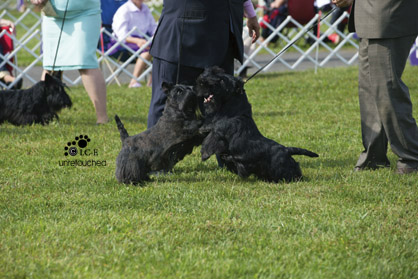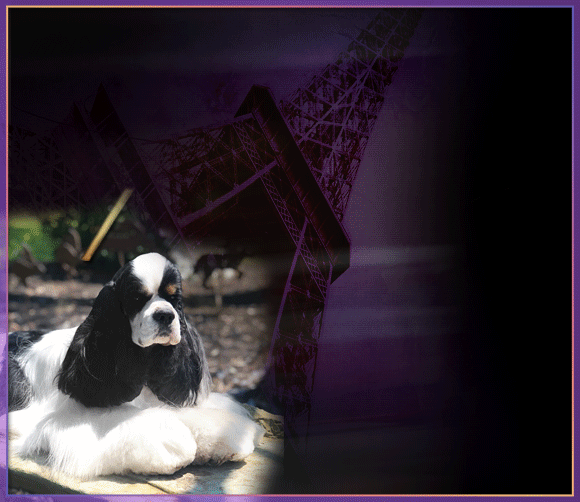The 7 Year Itch
by Dr. Quentin N. La Ham
From the archives of The Canine Chronicle, June, 1992
“Ours is not a prose game, it is a search for the truth.”
PART 1
Articles espousing the merits of type occur intermittently but of late there seems to me to be more than the usual number. Whenever I have found these testimonials in my 40-plus years of active involvement in our sport, they are usually lopsidedly promulgated by persons who have great-headed and -coated dogs with little else to brag about. These persons can be very vociferous tending to think of a dog as ever so pretty but seemingly willing to ignore the fact that to be a good dog, pretty is not good enough. The dog should be beautiful and there is a vast difference between the two adjectives.
I became more concerned when I read articles by Frank Sabella either speaking for himself or when reporting on Ann Clark’s talk at the first AKC Judges School. Not because of what they say because I admire and respect both, but for what was not said. Based upon what I have read, I fear that many who have read these articles may conclude or view type in a very narrow way.
I share the view that the recognition of breed type is essential to breeding and judging dogs. This is basic to understanding any breed and were I developing a curriculum I would entitle this Freshman Course: “Purebred Dogs 100”. There is so much more to understanding type than the mere recognition of head, eye color, ears and coat. This is not type! That is recognizing the simplest and most obvious of what goes into making a good dog and correct type. Correct structure and correct movement are as important and an integral part of breed type. If that were not the case, why do so many of our better standards unequivocally state “the final test of CONFORMATION is in the movement of the dog”. Even the fundamental tenets of type are not absolute. We have infra-types in breeds. If that were not true, why would we hear statements from breeders and judges alike when referring to a particular dog? That’s a nice dog but he’s not my type! This is, unfortunately, too common in most breeds or even all breeds but for what it’s worth, in general, I think in most Terrier breeds we find far less variation of opinions amongst breeders about what constitutes a good dog; but don’t ask a Terrier handler to praise a competitor’s dog – that will be a “cold day in Hell.” The easy way out is to over-emphasize the simpler and obvious meristic characters of a dog rather than getting down to the far more difficult question of what constitutes correct structure and movement for that particular breed to determine whether or not it is correct type.
While the cases are legion, I will sight only a few examples of what I mean, but before doing so I wish to make reference to an article about “type vs. soundness” that appeared in the AKC Gazette a few issues back which more than any other spurred me to express my views on the subject.
“As I recall, the point of the article was the importance of “type” over, in his view, the less important concept of soundness and movement which I believe to be so inter-related as to be inseparable; a basic biological concept states: “structure and function are inseparable”.”
The story, as far as I was able to read it before revulsion set in, went something like this: In his neighbor’s yard there is this dog that he can hardly take his eyes from. In glowing terms, he described how well he is put together and what a great mover he is, etc. After reading it, one could not help but conjure up visions of the perfect dog, a magnificent canine athlete destined for super dogdom. Were I that naïve, I would have had my hopes dashed when he next stated that it was too bad he wasn’t purebred!
I bow to the rights of the Fourth Estate but I resent the implications of such statements.
If the author of that article reads this, I hope he will invite me to see his neighbor’s magnificent dog because being a constant student of canine structure and movement I would welcome the opportunity to observe, firsthand, this canine wonder. May I be forgiven for being suspect, but I think it is a case of artistic license with little basis, if any, in fact. It is statements like this that I deeply resent. It reminds me of those silly unfounded clichés to the effect, “You can find sound dogs in the local pound”. Show me! It will be a rare occurrence indeed. I equally have little regard for flowery gobbley-gook that sounds good but says nothing concrete or factual about the animal. For example, “Those undefinable attributes that constitute the essence of the breed”. Ours is not a prose game, it is a search for the truth. It is essential that the so-called undefinable be defined and romantic ephemeral notions be replaced by realism. If it can’t be defined, it either does not exist or we admit to our own inability to state something in rational, logical terms.
Stay tuned for Part 2 on Saturday May 9, 2020 …
Short URL: http://caninechronicle.com/?p=183482
Comments are closed







